Using the data compiled from the G-Changer V2 thermal testing I have compiled the following tables in an attempt to show another way how the V.2’s performance varies against itself at the flow rates and fan speeds tested. First let’s take a look at the raw W/10DT numbers we will be using:
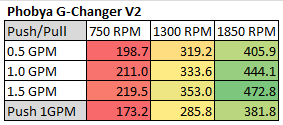 We can use these to show percentage gains relative to a reference point. It’s an interesting way to show gains/losses while changing a variable. This first table shows performance gain or loss relative to 1.0GPM flow rate:
We can use these to show percentage gains relative to a reference point. It’s an interesting way to show gains/losses while changing a variable. This first table shows performance gain or loss relative to 1.0GPM flow rate:
This shows that changing flow has a fairly linear effect across the entire range.
We can also focus on 1300RPM as our reference and see how much gain or loss in performance we get by changing fan speed:
As expected the change is dramatic. Lastly we can combine both and choose 1300 RPM and 1.0 GPM as our reference point to show both effects concurrently:
So from the data above we can get a very good idea of how the G-Changer V2 radiator performs relative to itself. But there is a large selection of 360mm radiator models to choose from, released from numerous manufacturers. So, we need to start comparing performance between them. To see how the radiator performed against the other radiators in this group I have included the averaged flow rate comparison charts from the Round Up. We know that the flow rate has little impact on thermal performance so averaging of the 3 flow rate results gives us a good look at head to head performance at the rpm speeds tested at with even less error.
Let’s start with the push data:
At 750 RPM this thicker radiator is bound to struggle to perform well.
At 1300 RPM it’s getting better, but is hardly topping any charts yet.
At 1850RPM it’s in the top half, but could be doing better. Luckily we know that push/pull data seemed to scale quite well in comparison, so let’s look at that now:
8th place at 750RPM is a much better start.
However at 1300RPM the G-Changer has dropped again.
At 1850RPM the UT60 gets left behind by the more “extreme” focussed radiators.
Now if we use the 1GPM data only then we can combine push and push/pull data into single plots:
At 750 RPM the push/pull result looks really good now, while the push result looks disappointing.
At 1300 RPM things are looking more average.
At 1850RPM things start to look better. The Push setup is now beating quite a few push/pull setups, while the Push/Pull is still a good bit ahead of the leading XE Push setup.
From all of these results we can create a “master performance factor”. The radiator with the best cooling ability (W/10ΔT) at each gpm/rpm combo was awarded a score of 100, and each other radiators W/10ΔT result was scored as percentage of the top performer:
Compare that to the UT60 and you see just how close they are:
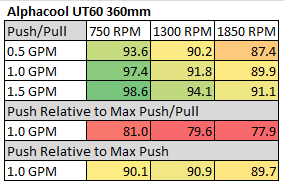
Essentially any differences here are most likely test error.
Then all these percentage scores were averaged giving us the Averaged Performance Factor of each radiator. This way of looking at the comparison takes away any advantages that a radiator may have at higher or lower fan speeds and looks at an overall average. While this appears fair it does tend to favor those radiators that are all rounders and those radiators which do very well at high RPM. Most users should be more focused on their specific use case. Check in the Round Up for performance comparisons at every gpm/rpm combo for even more details and cross comparison results.
Again let’s start with the Push only data:
With a score of 89.3, the G-Changer came in 14th out of 26.
For Push/Pull the score increases to 92.5, the G-Changer now finishes in 10th place.
Next up – Summary!








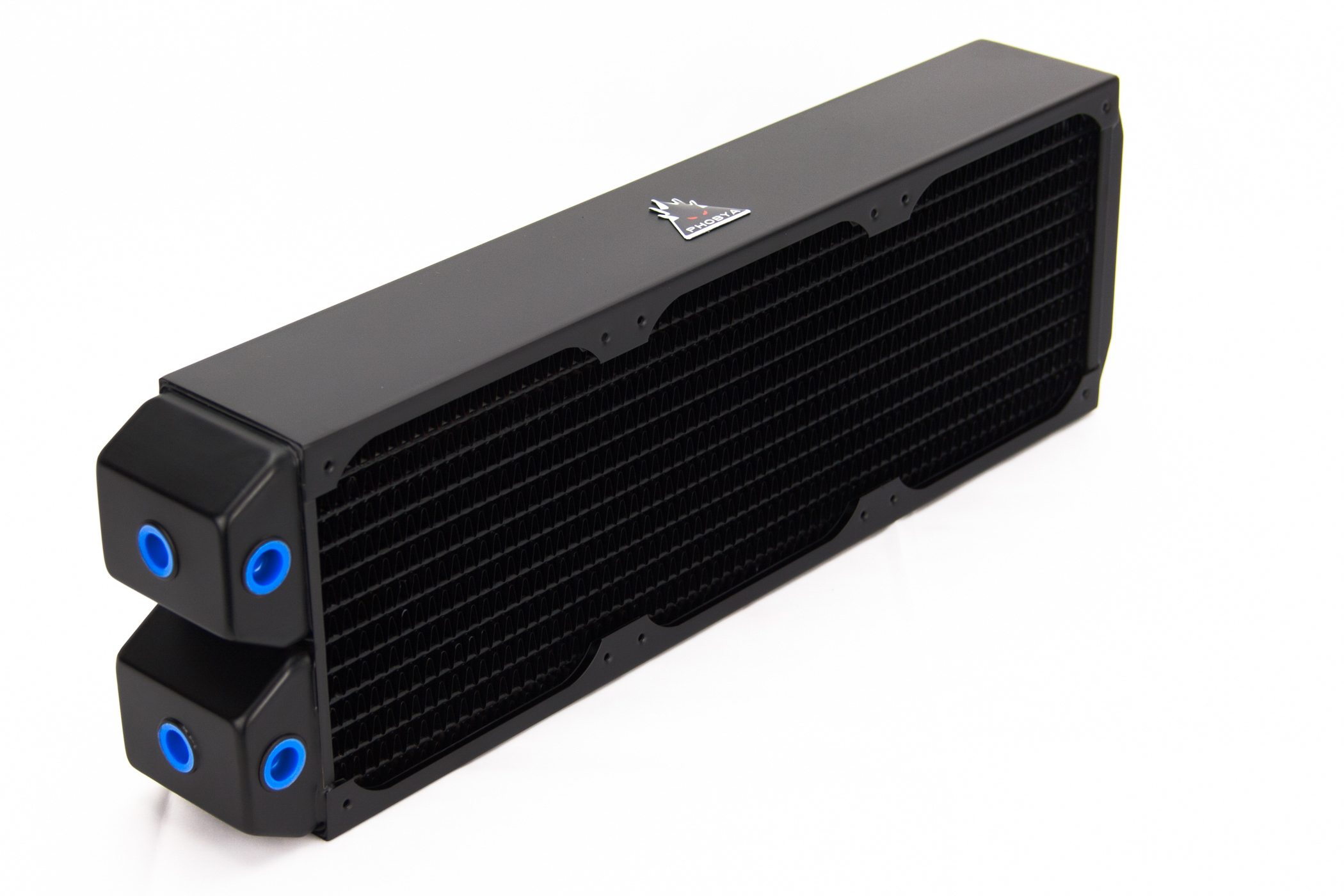
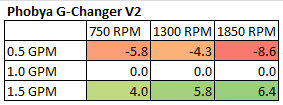
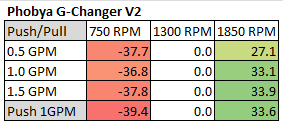
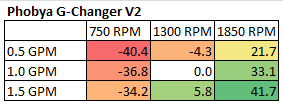
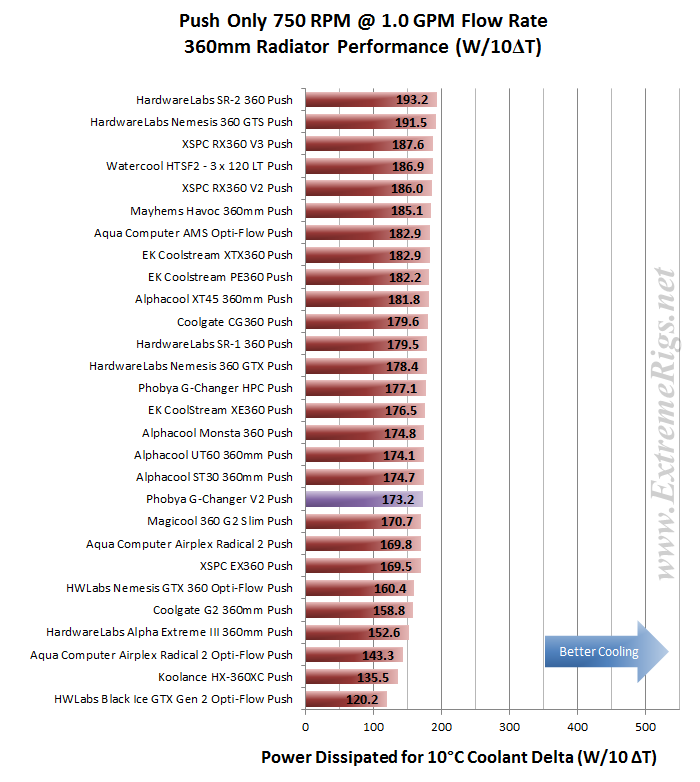
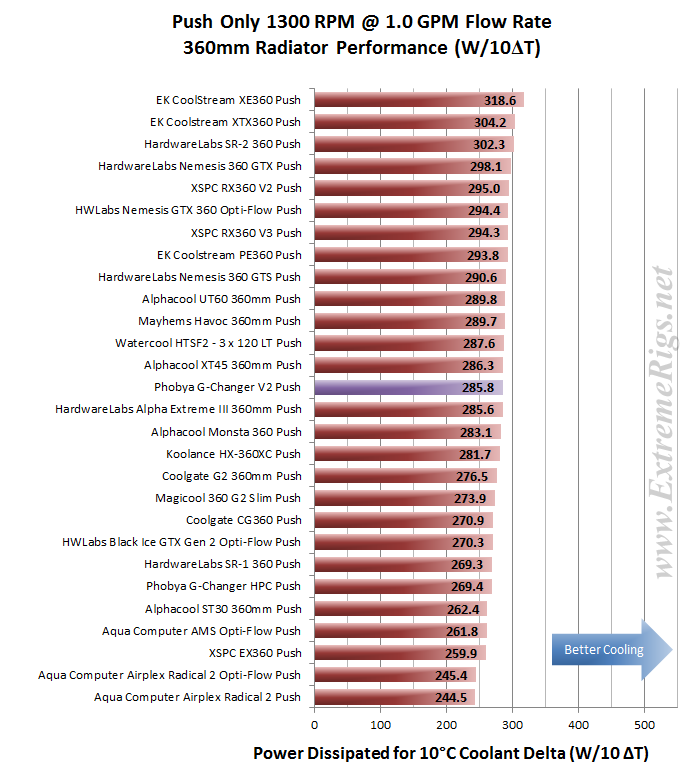
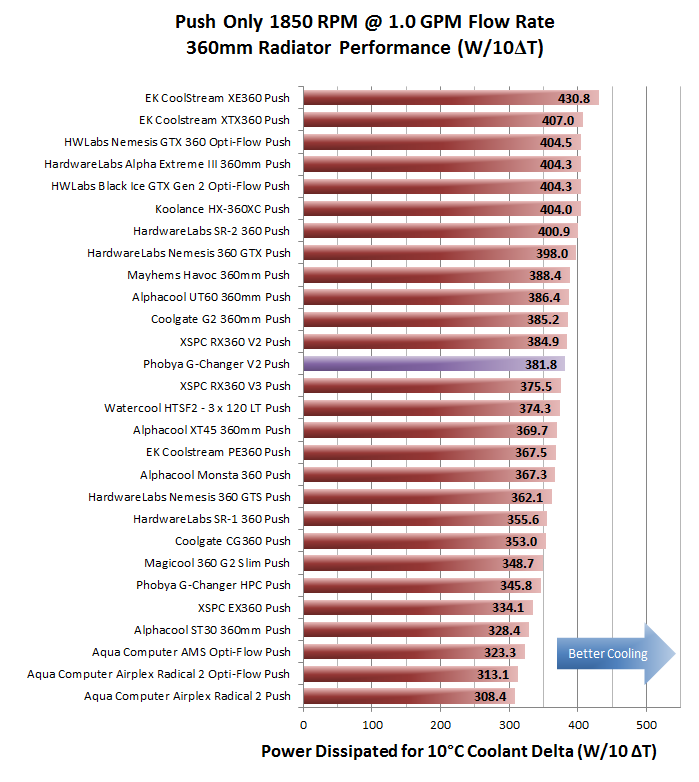
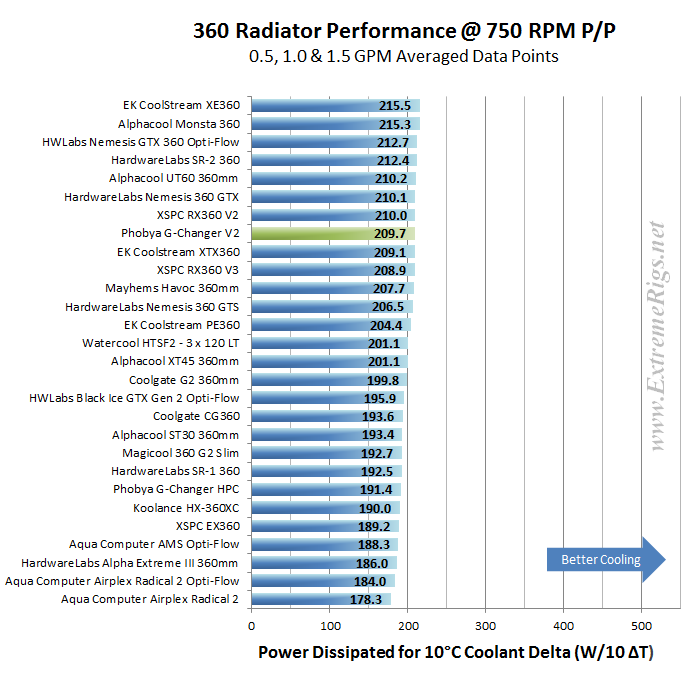
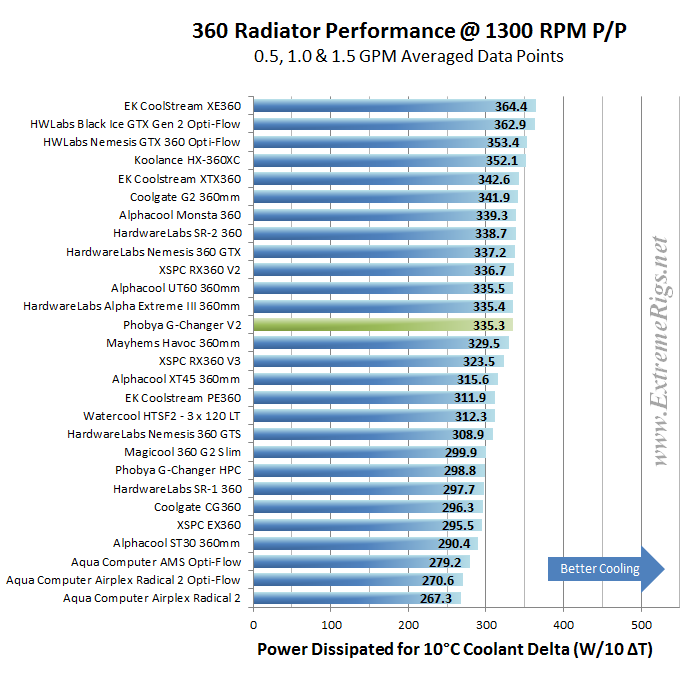
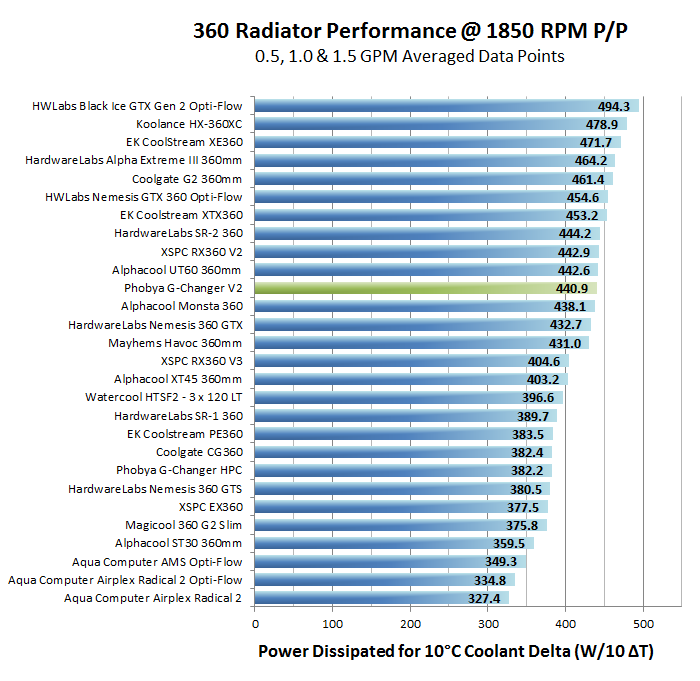
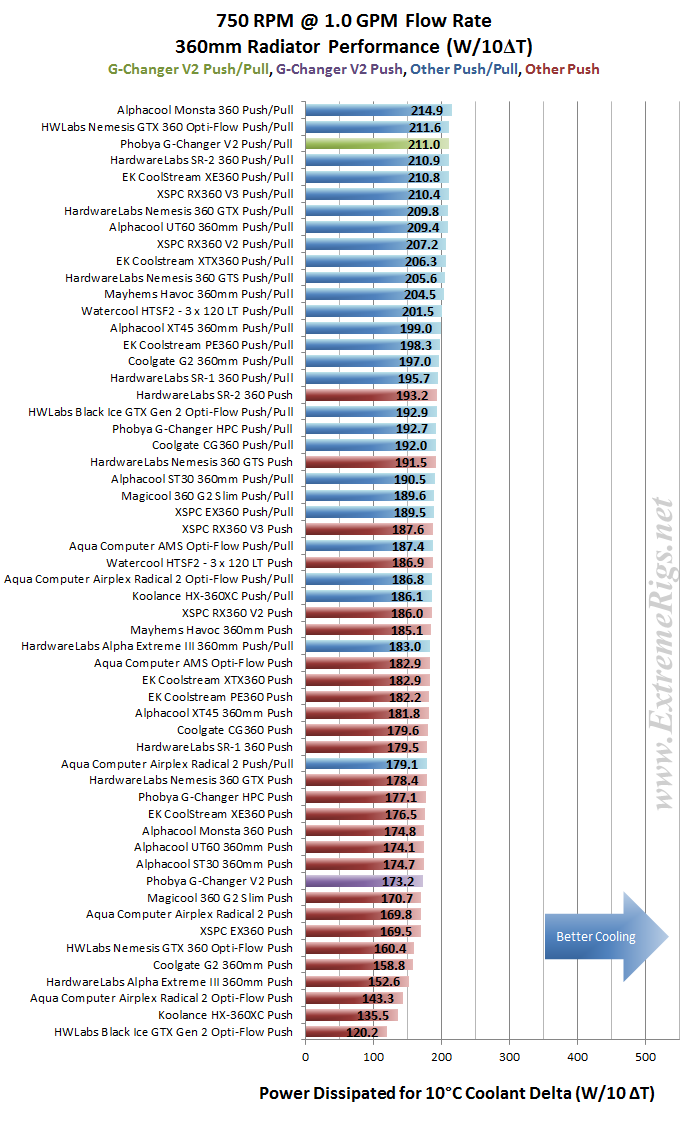
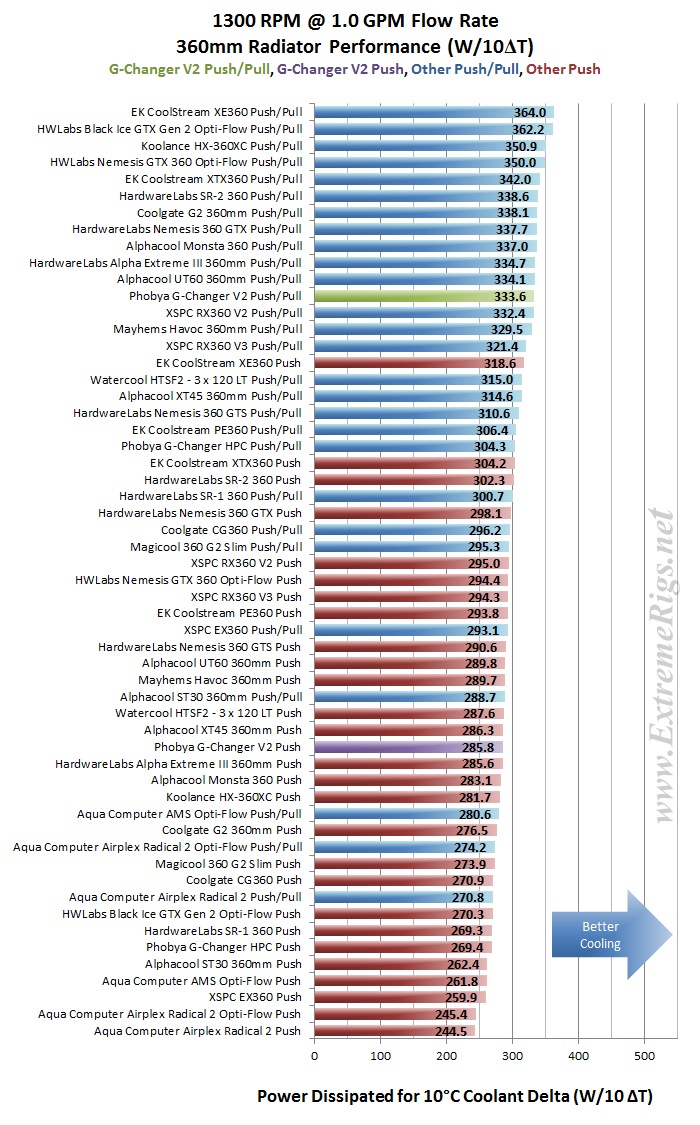
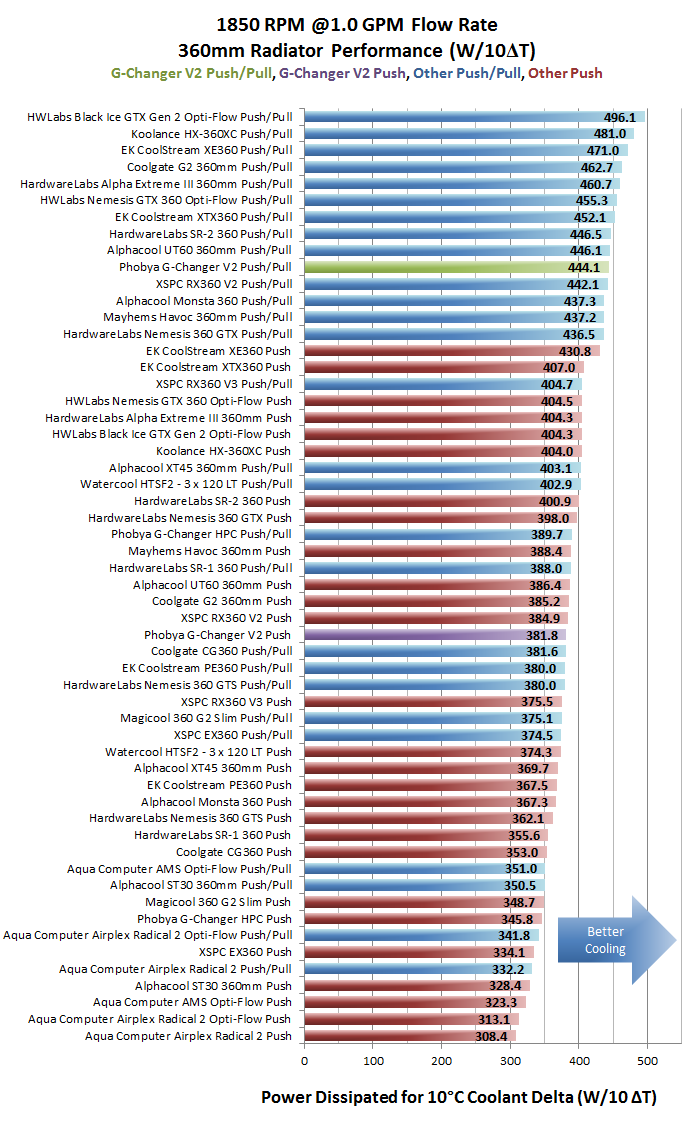
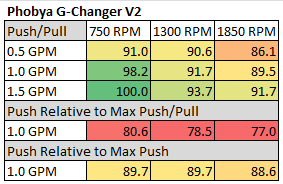
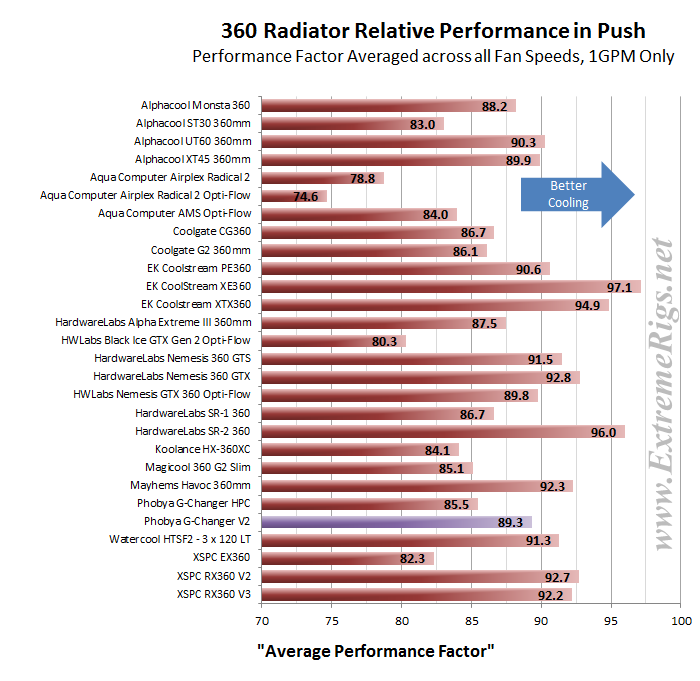
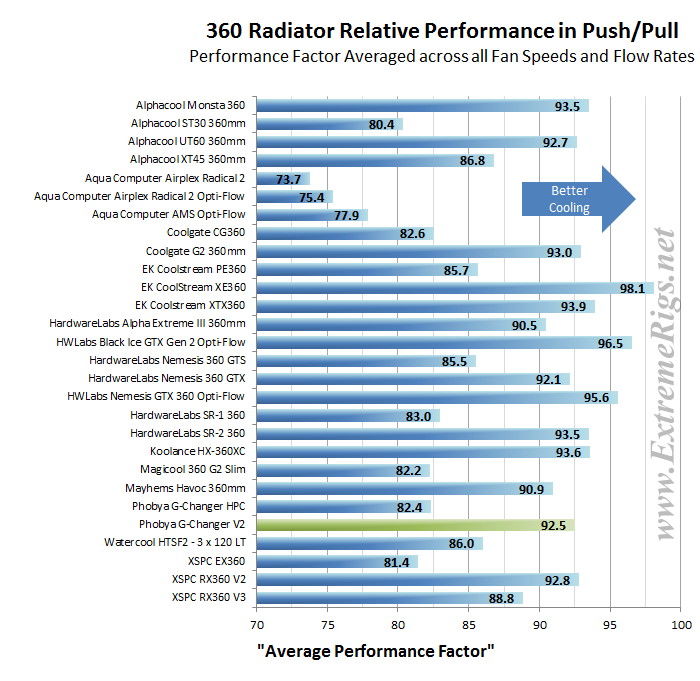




[…] Magicool G2 Slim 360 Radiator Mayhem’s Havoc 360 Radiator Phobya G-Changer HPC 360 Radiator Phobya G-Changer V2 Full Copper 360 Radiator Watercool HTSF2 3×120 LT 360 Radiator XSPC EX 360 Radiator XSPC RX v2 360 Radiator XSPC RX v3 […]
Comments are closed.